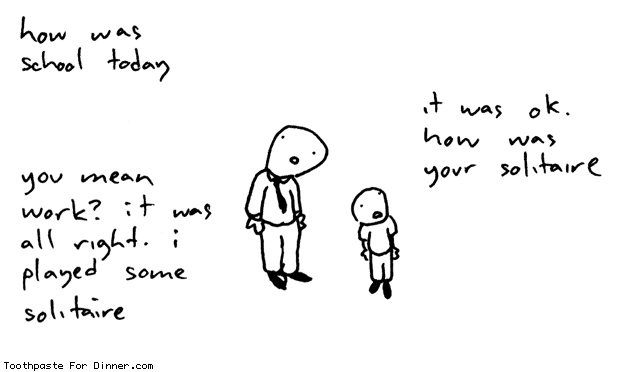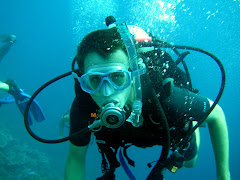A few days after getting to my training site back in May, I noticed a show on television that immediately captivated me with its overwhelming mixture of singing, dancing, karaoke, and quiz show. I couldn’t really understand what it was all about, it being mostly in Tagalog, but the show is more or less unavoidable in this country, so over the weeks and months I began to understand it well. In short, Wowowee is a variety show watched in millions of households in the Philippines six days a week. To learn more than I could tell you, or wish to type, click here [
http://en.wikipedia.org/wiki/Wowowee]. I decided early on that I would like to make an appearance on the show at some point in my tenure here.
In October, as I was making preparations to go to Manila for a meeting, I mentioned to some friends in the Municipal Hall that I hoped to attend Wowowee while there. One girl said that her uncle worked for the Movie and Television Review and Control Board, which apparently has connections to get in to any TV show or movie, so a process of text messages between many involved parties was set in motion, culminating with an appointment for me to meet her uncle at the ABS-CBN studio in Quezon City on the morning of the show. So on Friday, October 12, my friend David and I took the light rail out to studio and met the family. I texted everybody in my phone book to watch us on the show, because I was fairly certain we would get some camera time – whenever any non-Filipino person is in the crowd, they are constantly panned to. Numerous viewing parties were apparently hastily arranged in my town.
When we got into the studio, it was smaller than it looks on TV, as studios always are, but I was amazed by the camera tricks that are played. It was really small! We had seats in the The Filipino Channel (TFC) subscribers section, which is populated by OFW’s (Overseas Foreign Workers) and other Filipinos living abroad, most of whom hold up signs representing where they’re from. So all around us were Filipinos holding signs like “Riyadh”, “New York”, and “Seattle, Washington” (she had relatives in Everett!) – and in the middle, the only two white guys in the audience, one of them holding a sign saying “Amlan, Negros Oriental.” That was my key to getting a lot of screen time, I knew it. But I told everybody that I didn’t want to be a contestant, participant, or anything like that. I just wanted to watch in person.
The show always starts off with a sort of singalong, which then turns into a dance contest to select the “Bigat10”, who later compete in the quiz show portion for cash. Bigaten, I was later told, means something like “big shot” in Tagalog. So before taping started, the staff taught everybody the new dance, which is called Sayaw Darling (sayaw meaning dance). It was a very simple dance, and they really emphasized puckering your lips while doing it.
Taping started with the Wowowee dancers running out and performing a dance routine, with so much going on, so many flashing lights, and general pandemonium that I didn’t know where to look. Staff went around the TFC section with microphones so people could give shout-outs to their family and friends. I managed to get off a “Hello to everybody in Amlan, Negros Oriental!” before the microphone was whipped away. Then Sayaw Darling started, with the host Willie going around to each section and selecting the Bigaten. Eventually they got to the TFC section. I was just sort of dancing along happily, holding my sign – you know me, I like to ham it up – and then I realized that all the staff on the floor was encouraging us to pucker our lips, so I went along with it. As Mike D of the Beastie Boys once put it, “I’m the one that won that dance contest, ‘cause you know I dance the best.” All of a sudden Willie screamed “Bigaten!” and pointed at me, and confetti and fog filled the air. Oh, crap.
I was quickly pulled down out of the crowd and onto the stage, given four bags with promotional items, and danced in a line with the other Bigaten. One of the hosts of the show, Pokwang, who looks like a drag queen but is apparently actually a woman, came up and hugged me while dancing and puckering her lips. Imagine the situation: on Tuesday, you’re sitting in an office with your coworkers debating whether Pokwang is a girl or a boy trying to look like a girl, and on Friday, you’re on national television in front of probably 30 million people with Pokwang’s arms wrapped around you, dancing.
The initial segment ended and all the Bigaten were taken backstage to have the rules of the game we would participate in explained. You have to stand at a microphone with the back of your hand held under your chin, and when the signal is given, hit the buzzer with your hand and give the answer. If you are right, you win 10,000 pesos (about $230) – which goes a very far way here. I was a little unsure about all this – as Peace Corps Volunteers we’re not allowed to win money, I’m pretty sure. And it would be pretty hard to hide money won on national television. After the explanation, we spent most of the show waiting from the sidelines, as they ran through singing and dancing, and “name that tune” by parents and children who shared the same birthday.
Finally, it was Bigaten time. We were all lined up to face the winner of the previous segment in a 1-on-1-on-1 tournament – two Bigaten at a time versus the one earlier winner. The first pair went up, and then it was my turn. My opponent was a half-Filipina girl from Switzerland, so for our benefit, they switched to English. Our question was: Complete the line from a song – “Yesterday, all my troubles seemed so far away, love was such an easy ____ to play.” I knew the answer! It’s “Game”! Easy question. However, I was completely distracted by everything that was going on, was unsure about winning the money, and, in all honesty, was slow on the draw even if I had tried really hard. My Swiss opponent was on the ball and got her hand down immediately and went away with the P10,000.
All in all, my winnings were as follows:
· Samples of Pau liniment, Liveraide capsules, Taheebo capsules, and Fitrum capsules (all Filipino products for muscle pain, liver problems, general herbal supplements, and weight loss, respectively)
· Three low-quality water bottles with Liveraide, Taheebo, and Fitrum logos, respectively
· A Pau hat with small Wowowee logos on the side
· Fleeting fame in Manila (a few random people coming up to me and dancing out on the street, some glances on the light rail train)
· Celebrity status in my town
Hopefully we’ll be able to get a recording of the show and put some highlights on YouTube. I’ll keep you posted.
Here are some pics from the show:
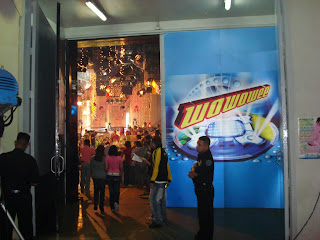
Backstage, waiting for the Bigat10 game to start

The game show set-up: Hosts Mariel, Pokwang, and Valerie, the podium, and my competitors
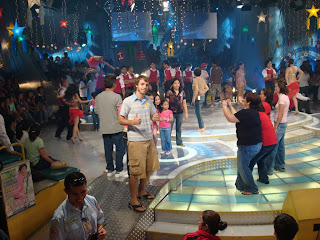
Pre-show, hanging out on the set
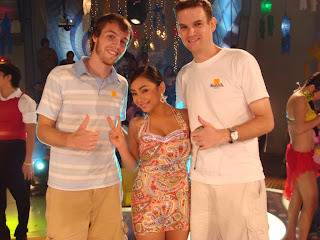
David and I with one of the Wowowee dancers


